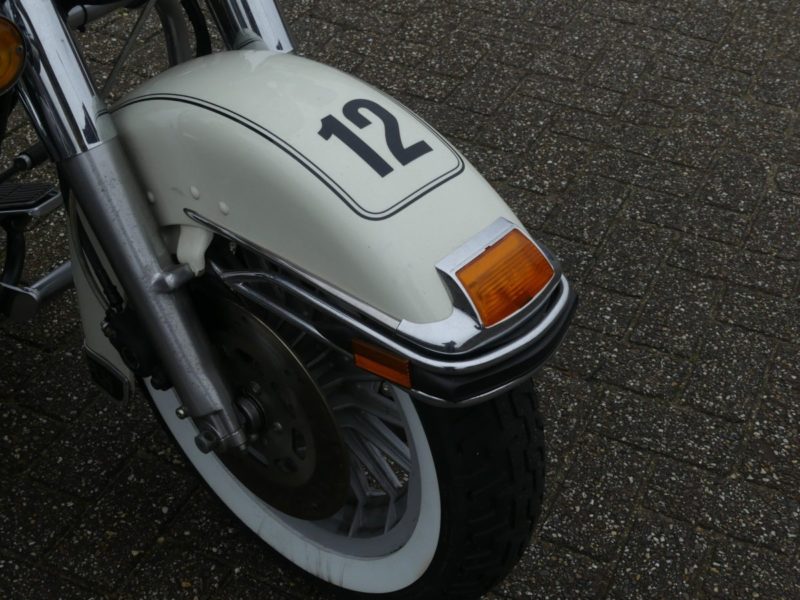Recently we were busy with a story about that brand that puts so much past into its future: Harley-Davidson. Now a classic Harley is a kind of motorcycle where you expect very dated 1.0 technology. Old Harleys are not called 'Hardly-Ablestones' for nothing. By the way, new Harleys only pretend to be classic. They hang by their axes of electronics and marketing.
In this case we walked quietly around the giant and we were impressed by the crowd. It only became really surprising when we saw that valve. On the crash bar.
There are quite a few technical contradictions where you have to take a look at how it is all intended and how it works
The hub steering system of Elf, the bicycle part of the Bimota Tesi, the hubless wheels of Franco Sbarro. Motorcycles with front-wheel or two-wheel drive?
They were experiments or burping. And in the 70s-80s, air (assisted) suspension was a 'hot' for a while
Suspension is something else as damping. The suspension…. fourteen. The damping ensures that the spring movement is tamed. For motorcycles, the suspension is usually done with a coil spring. And the bouncing of such a thing is muffled by 'oil' that is squeezed through calibrated holes. The steel spring can be wound linearly or progressively. With a progressively wound spring, the spring force increases as the spring is loaded more heavily. That's fine. It provides comfort when riding quietly and shows its muscles when brave driving and braking are used.
Instead of a progressively wounded spring you can also use an air chamber
Because, unlike liquids, gases are compressible. Everyone who has ever pumped up a bicycle tire has felt it. And that the compressibility becomes heavier as the compression increases is covered by the same exercise. Air suspension is therefore also progressive. But the medium of air remains compressible until all its components end up in their liquid phase due to pressure.
But in the early days of air-assisted suspension on motorcycles, life was still simple
The idea was to use the growing suspension of compressing and expanding air to support the suspension. This was done by providing front fork caps with a valve. For example, the front fork legs could be put 'under pressure'. The 2.0 version of that idea was that both fork legs were filled with a T / piece. In the experimental phase, a front fork seal was sometimes blown out and it remained more of a nice idea than a solution. Air suspension can be great if the entire suspension is designed for it. As has been done with most trucks and combinations and very luxurious cars.
The Harley was clearly not yet evolved
Some searching made it clear that the valve on the front fork was intended as an air tank. But for what? There appeared to be two options: Harley once invented such a thing as part of the operation of an anti / dive system, an anti-dive system with a solenoid valve operated by the front brake light switch. A former Harley owner reported disassembling it from his bike because the system blew out the fork seals.
When using this system, another disadvantage emerged
The Americans had apparently invested too heavily on air as a spring medium. In doing so, they had underestimated the compressibility of the medium. On the infinitely flat roads of the USA it was perhaps not immediately a nuisance. The air above the spring-loaded legs could be compressed a bit more. The mass inertia of the heavy unsprung amount of metal (massive fork legs, a heavy duty cast wheel with a thick tire and two lead brake discs) at the front must also have helped effectively. And the front fender hit his head with that action. This shows that the Americans had in any case opted for too weak coil springs.
Oh yes: We found another valve on the left side cover. For the rear suspension.
Thanks to Marin Sluimer for the pictures from his workshop manual.







My GL1100 also has a valve on the left foot. Will be checked at the start of the season and possibly put under pressure. Always on pressure. The effect?? No idea
But if the case remains under pressure and the front fork seals are not spit out, will it work?